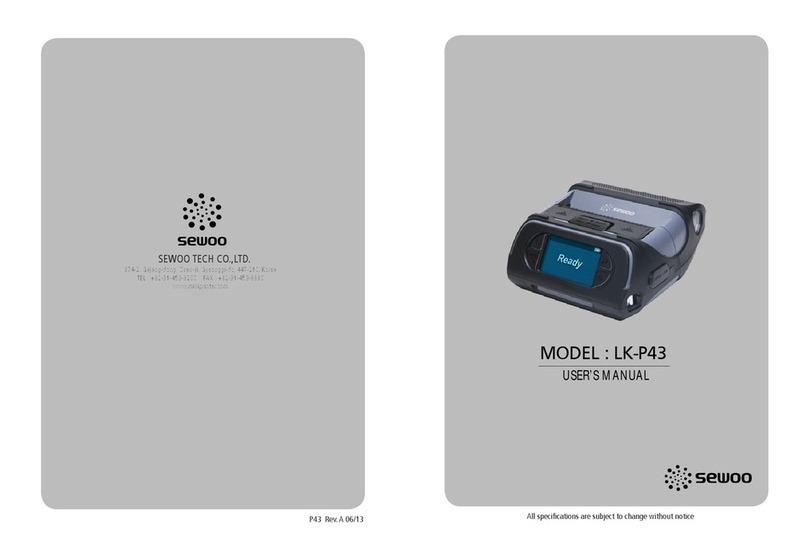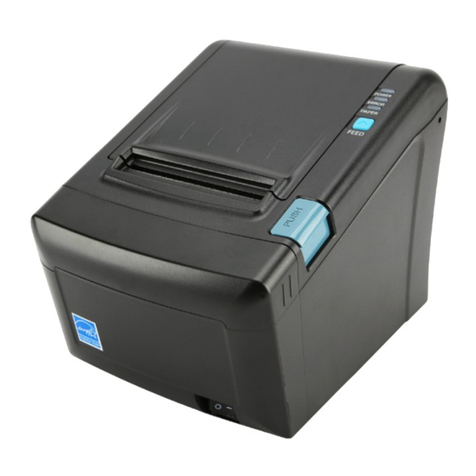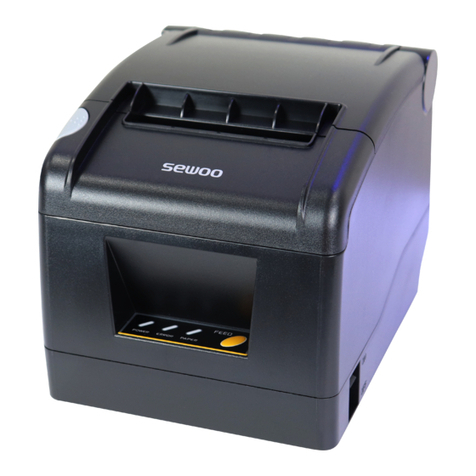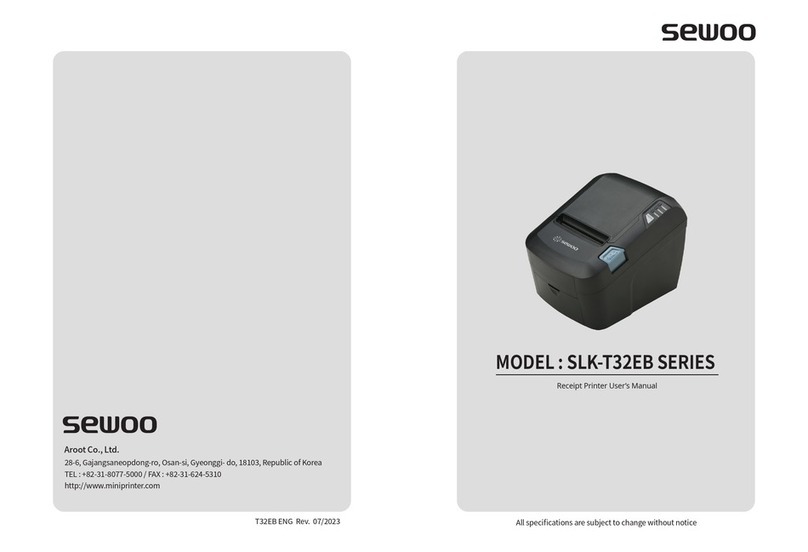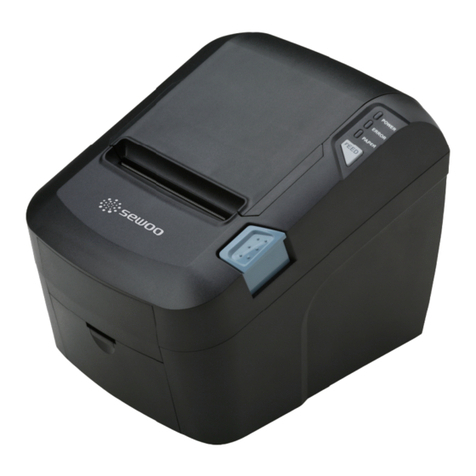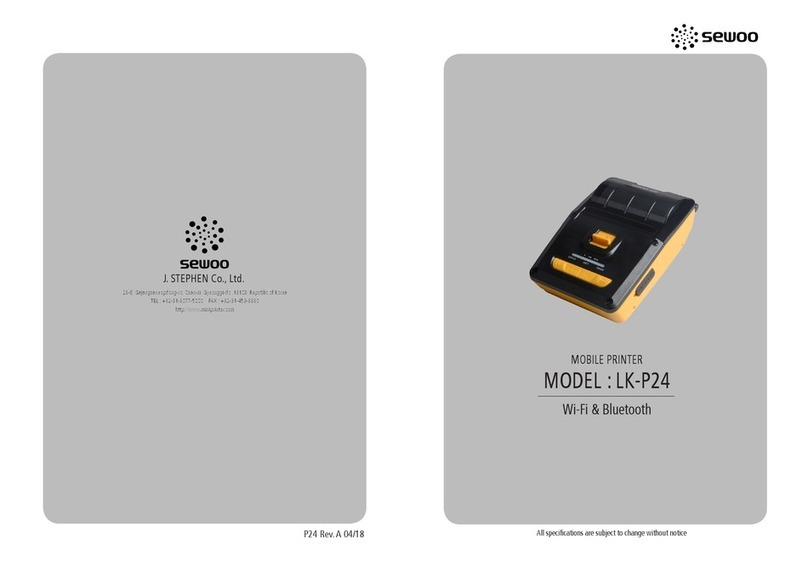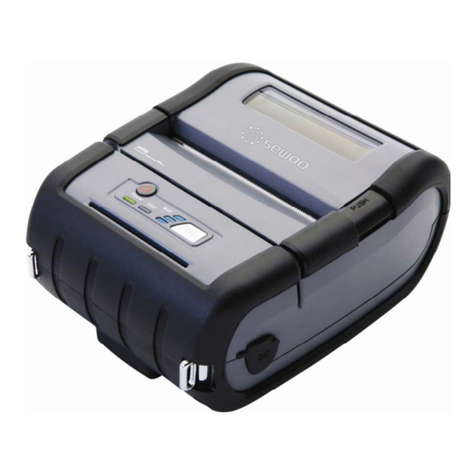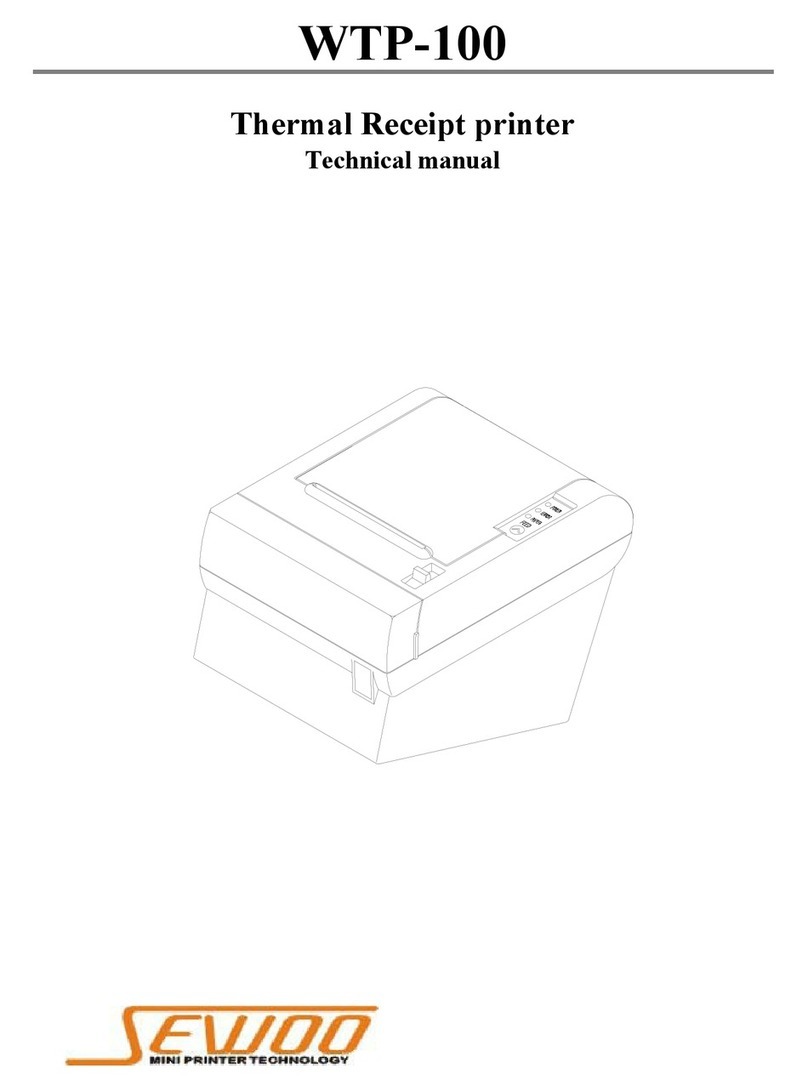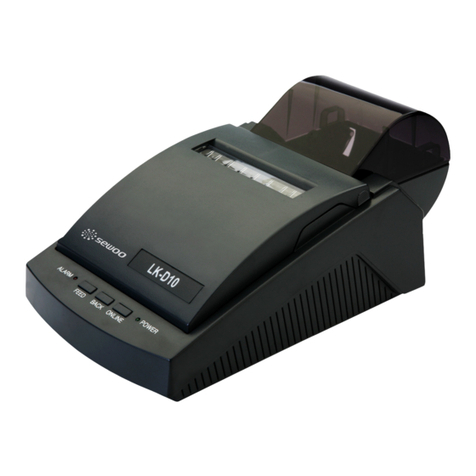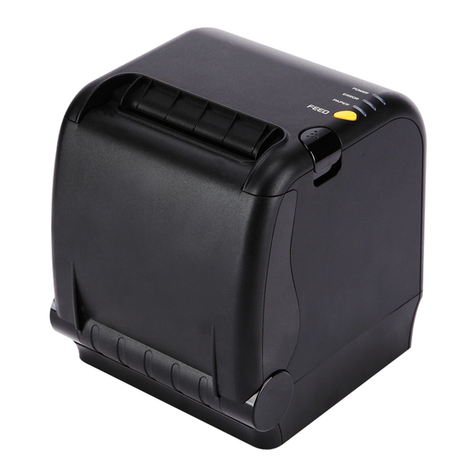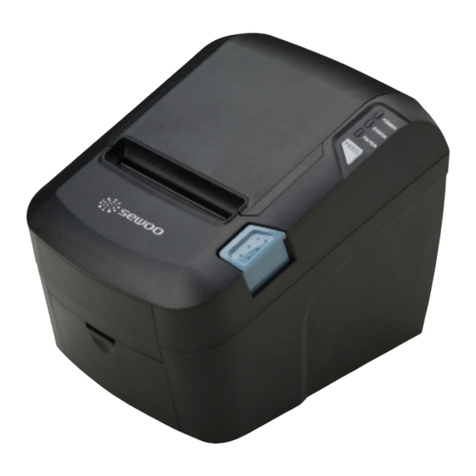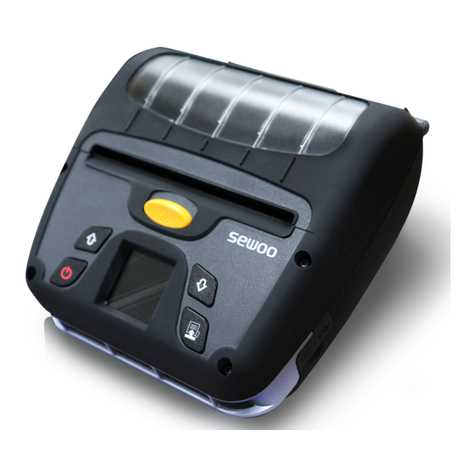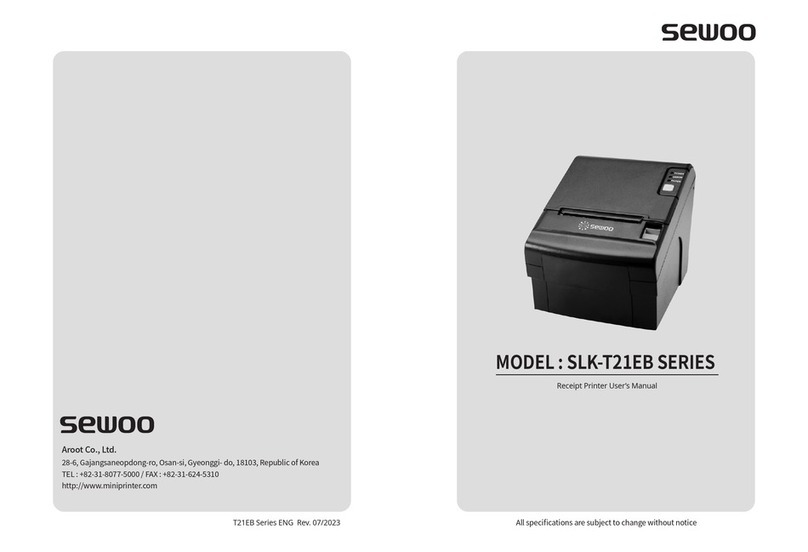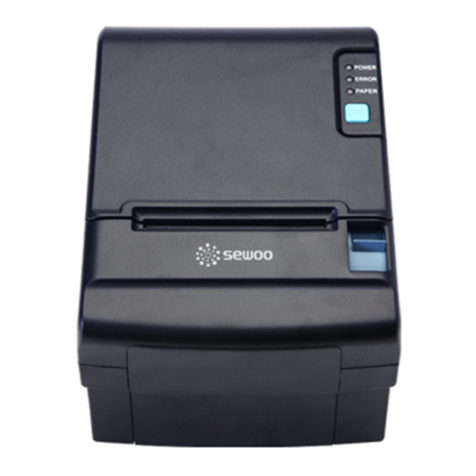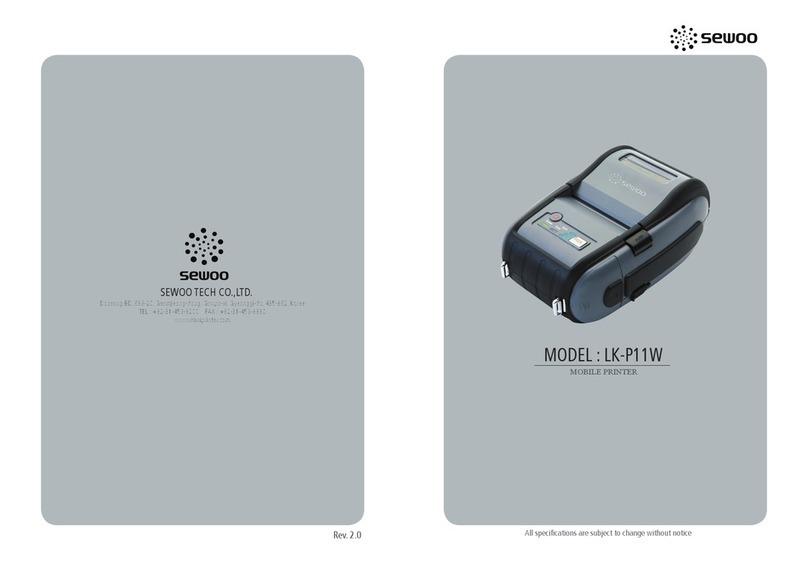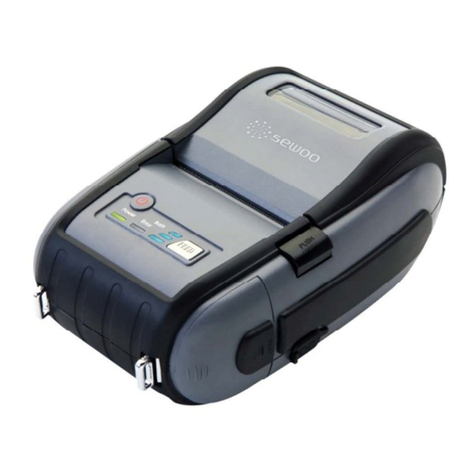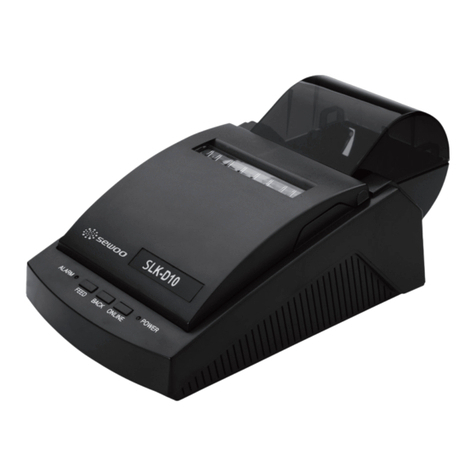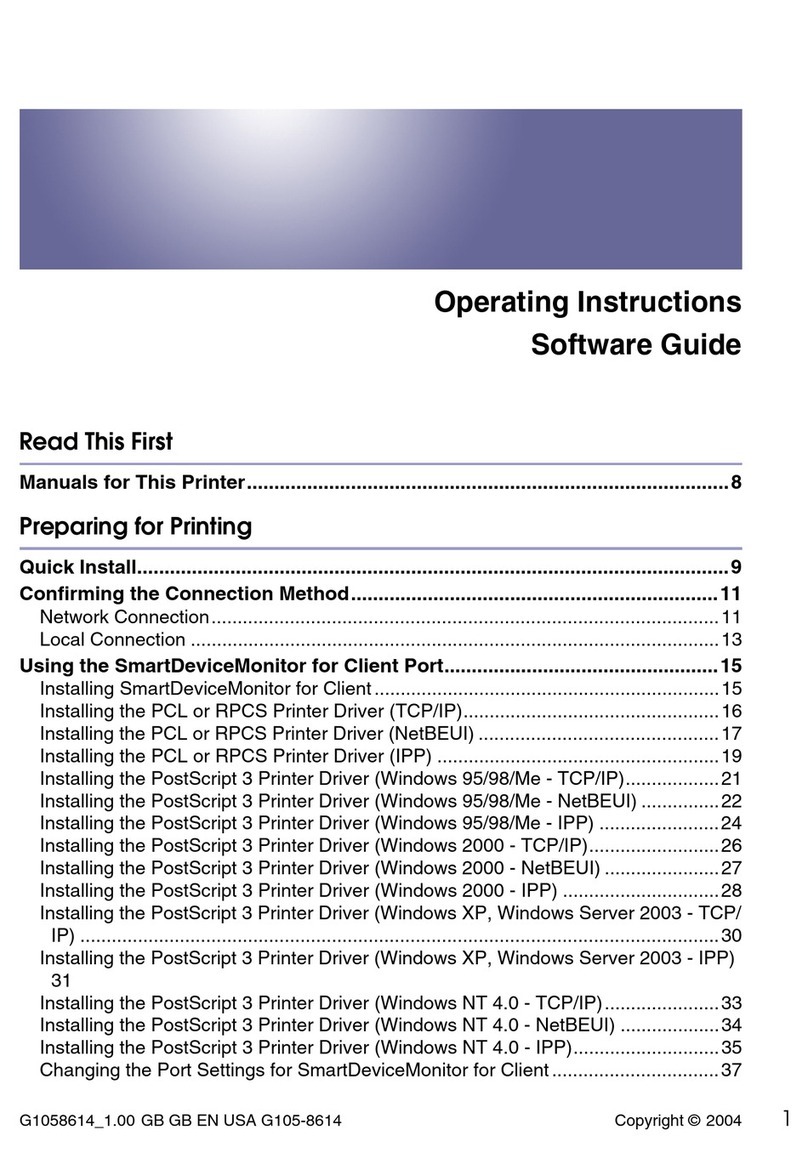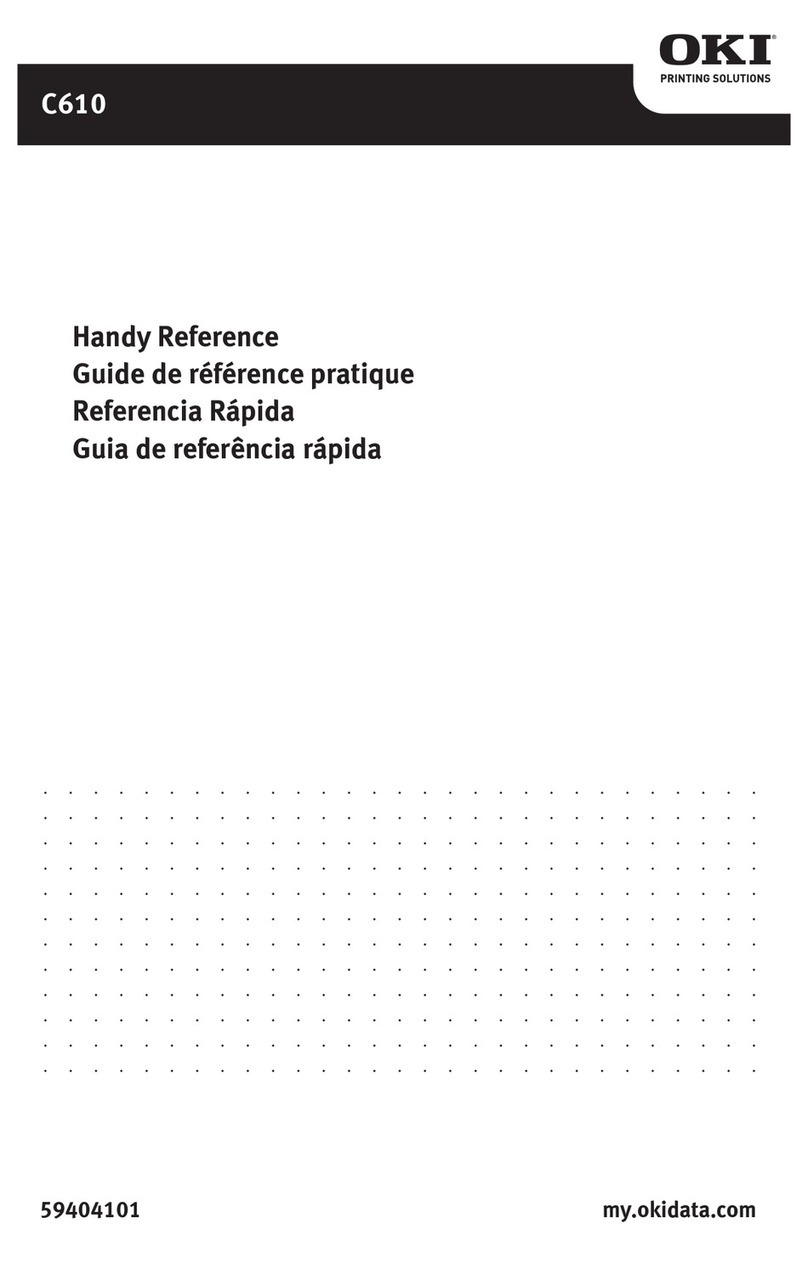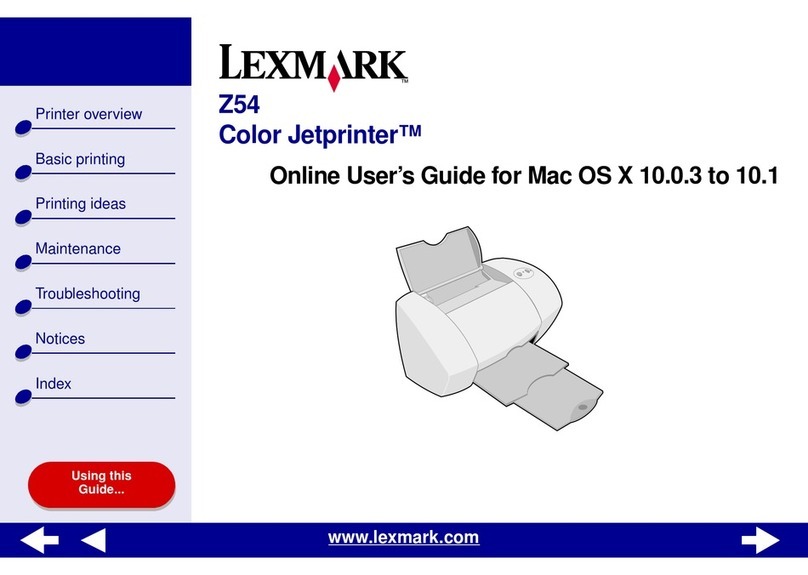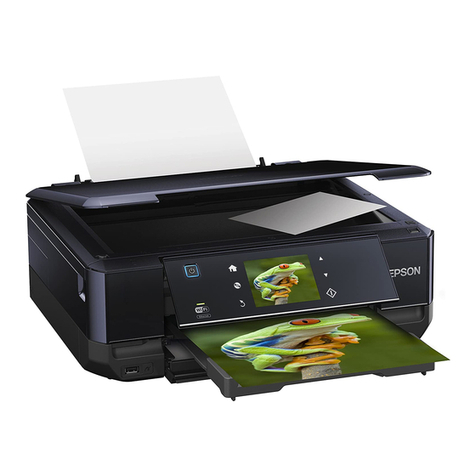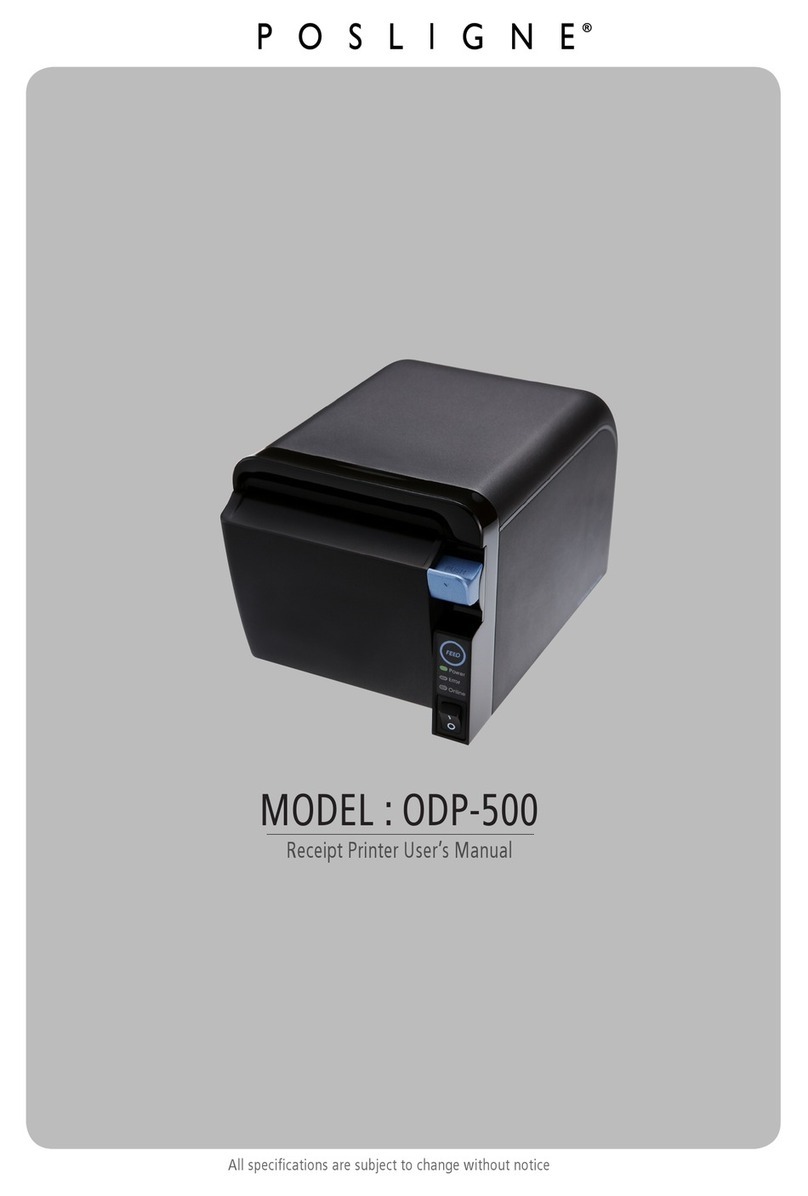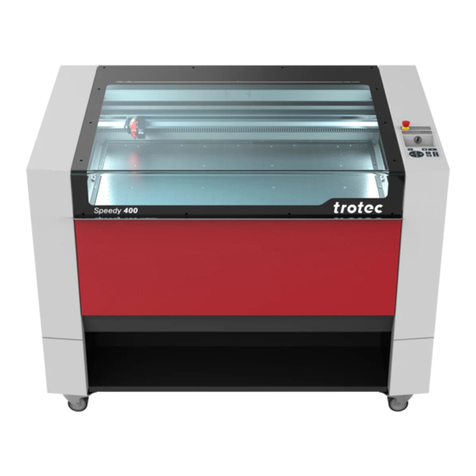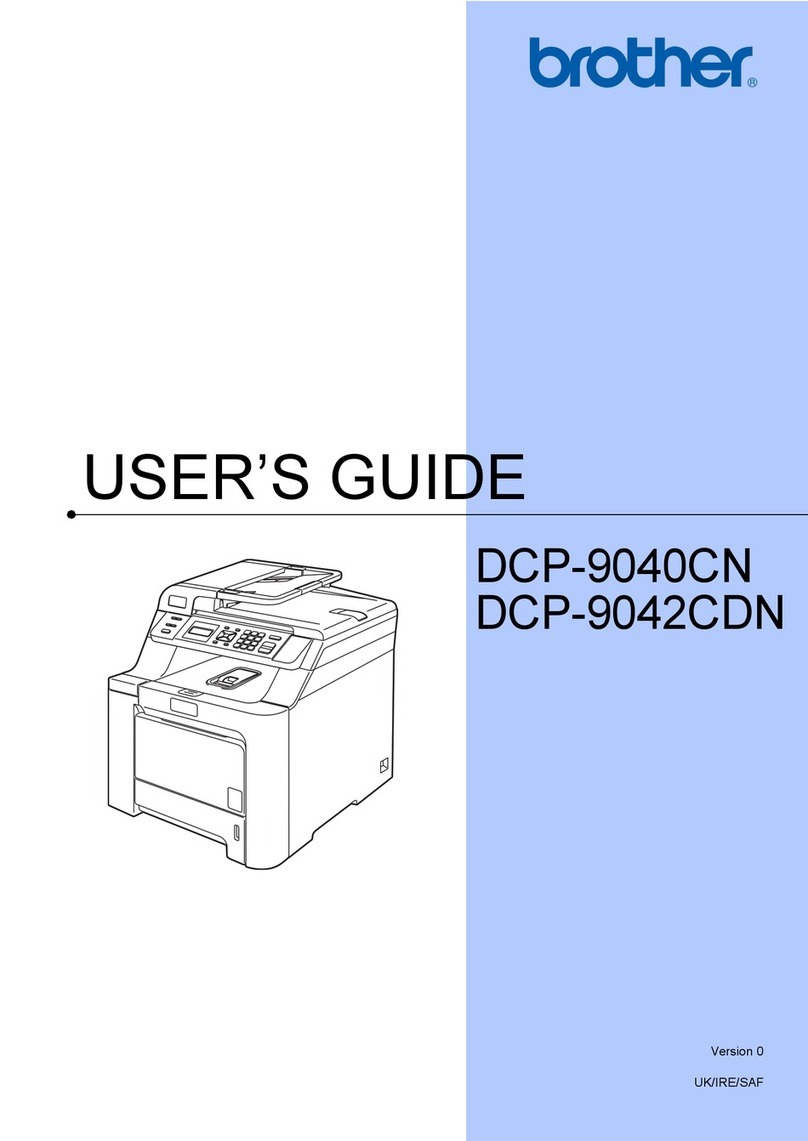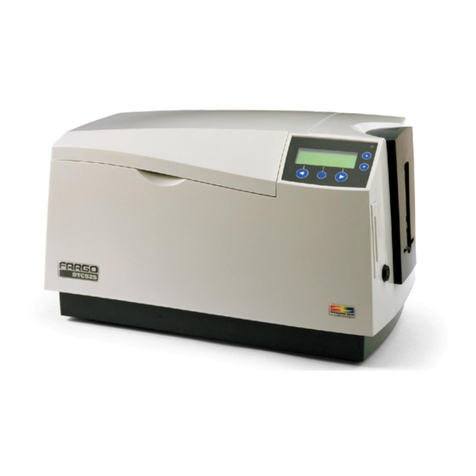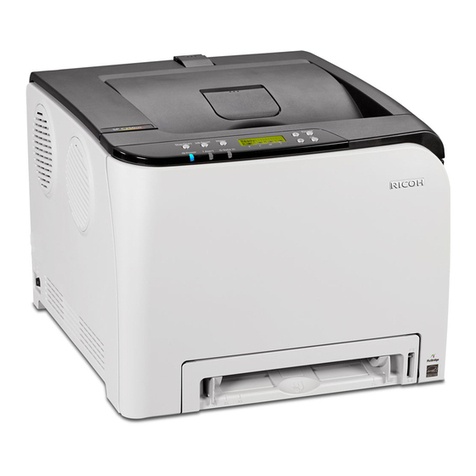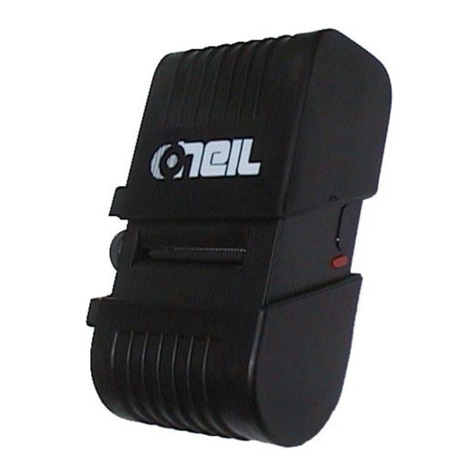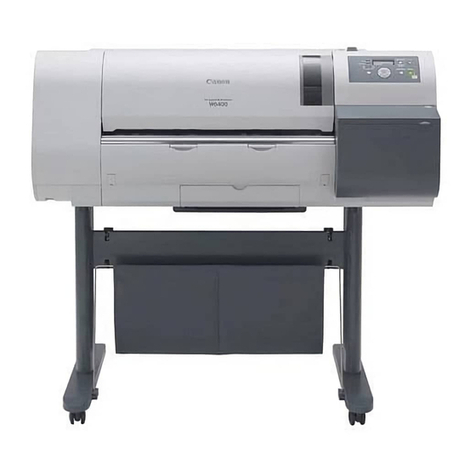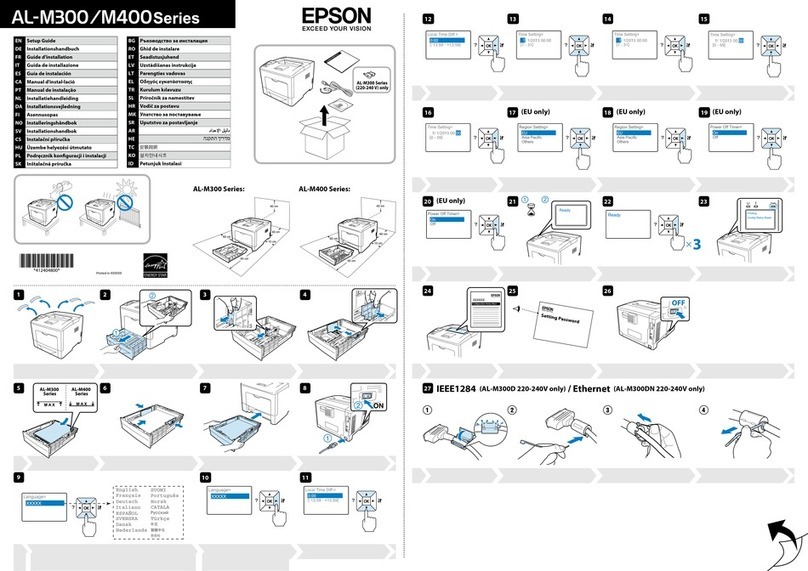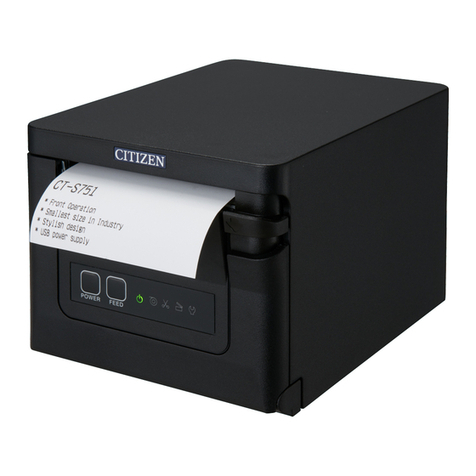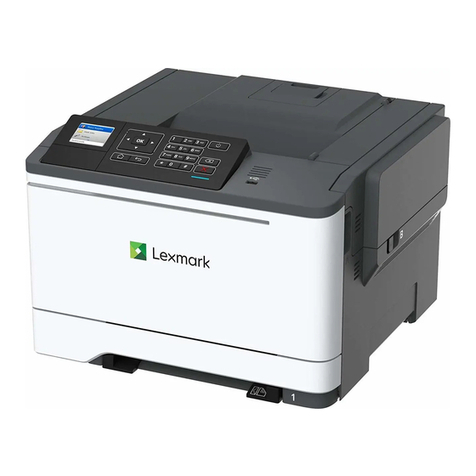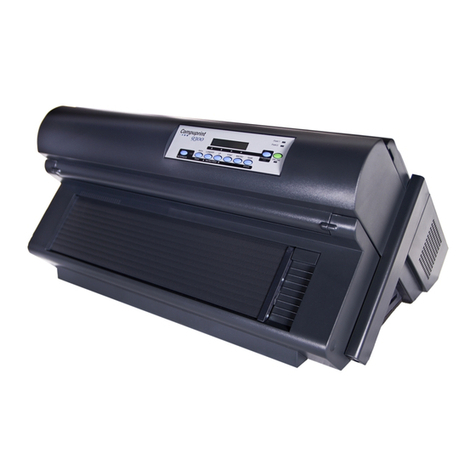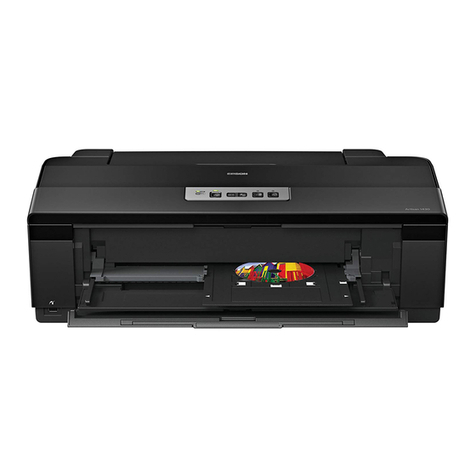
TECHNICAL MANUAL
DLE EOT n
[Name] Real-time status transmission.
[Format] ASCII DLE EOT n
Hex 10 04 n
Decimal 16 4 n
[Range] 1≤n≤4
[Description] Transmits the selected printer status specified by n in real-time,
according to the following parameters:
n=1 : Transmit printer status
n=2 : Transmit off-line status
n=3 : Transmit error status
n=4 : Transmit paper roll sensor status
[Notes] The status is transmitted whenever the data sequence of
<10>H<04>H<n> (1 ≤ n ≤ 4) is received.
Example:
In ESC * m nL nH d1...dk, d1=<10>H, d2=<04>H, d3=<01>H
This command should not be used within the data sequence of another
command that consists of 2 or more bytes.
Example:
If you attempt to transmit ESC 3 n to the printer, but DTR (DSR for the
host computer) goes to MARK before n is transmitted and then DLE EOT 3
interrupts before n is received, the code <10>H for DLE EOT 3 is
processed as the code for ESC 3 <10>H.
Even though the printer is not selected using ESC = (select peripheral
device), this command is effective.
The printer transmits the current status. Each status is represented by
one-byte data.
The printer transmits the status without confirming whether the host
computer can receive data.
The printer executes this command upon receiving it.
This command is executed even when the printer is off-line, the receive
buffer is full, or there is an error status with a serial interface model.
With a parallel interface model, this command can not be executed when
the printer is busy. This command is executed even when the printer is
off-line or there is an error status when DIP switch 2-1 is on with a
parallel interface model.
When Auto Status Back (ASB) is enabled using the GS a command, the
status transmitted by the DLE EOT command and the ASB status must be
differentiated.
TITLE : WTP-100
Page20




















